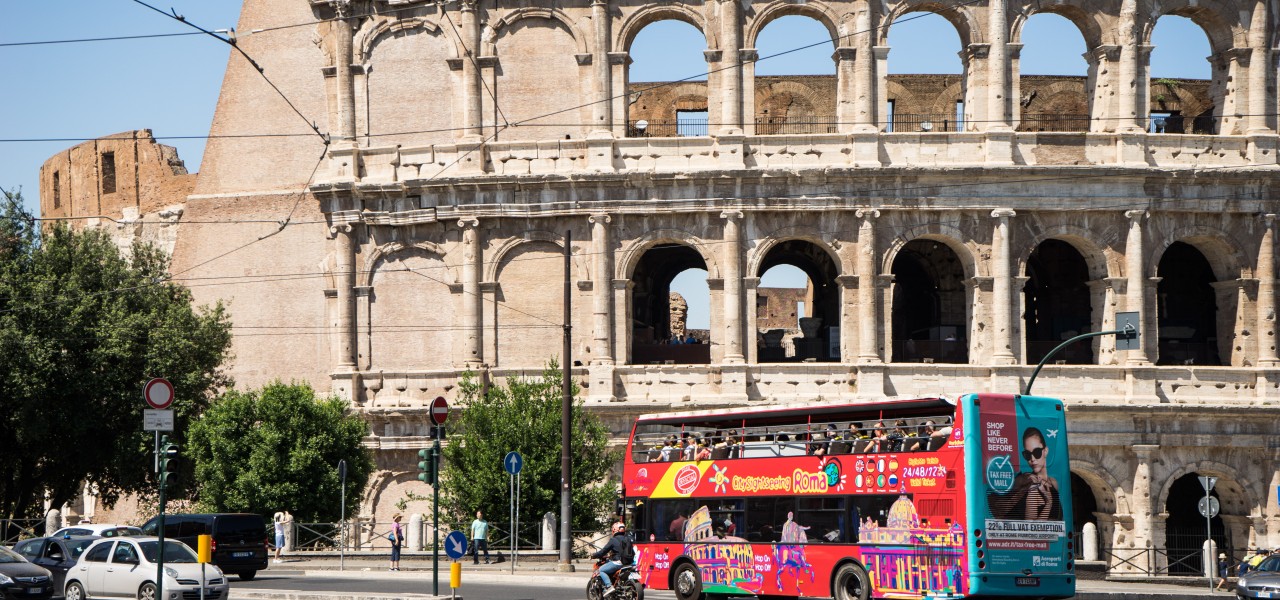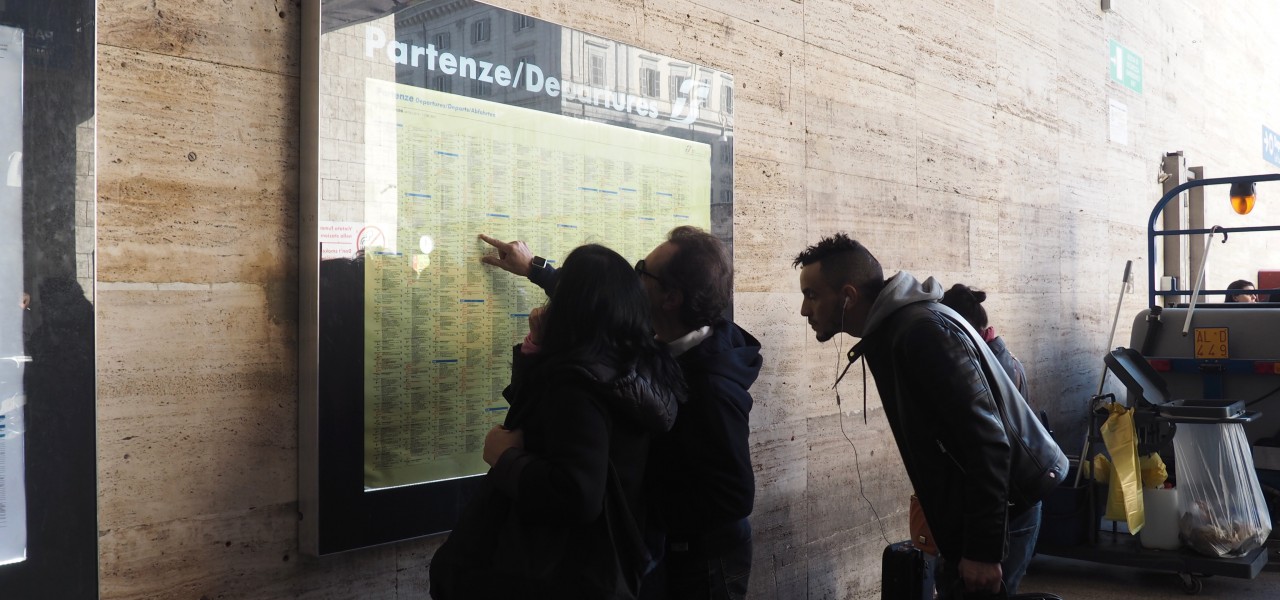This article gives you tips and information on admission, tickets and opening hours of St. Peter’s Basilica in Rome, including numerous pictures! St Peter’s Church in Rome is one of four Roman Papal Basilicas. With up to 20 million visitors annually, St. Peter’s Basilica is one of the 10 most visited attractions in the world. That’s an average of around 55,000 visitors per day. The most visited papal audience included 91,000 faithful.
St Peter’s Rome: All information about the largest church in the world
St. Peter’s Basilica in Rome is the largest church in the world. The Basilica Notre Dame de la Paix on the Ivory Coast is often mentioned in this context. Its outer surface is larger than that of St. Peter’s, but inside it is comparatively smaller. There is space for 60,000 people in St. Peter’s Basilica and for only 18,000 in Notre Dame de la Paix.
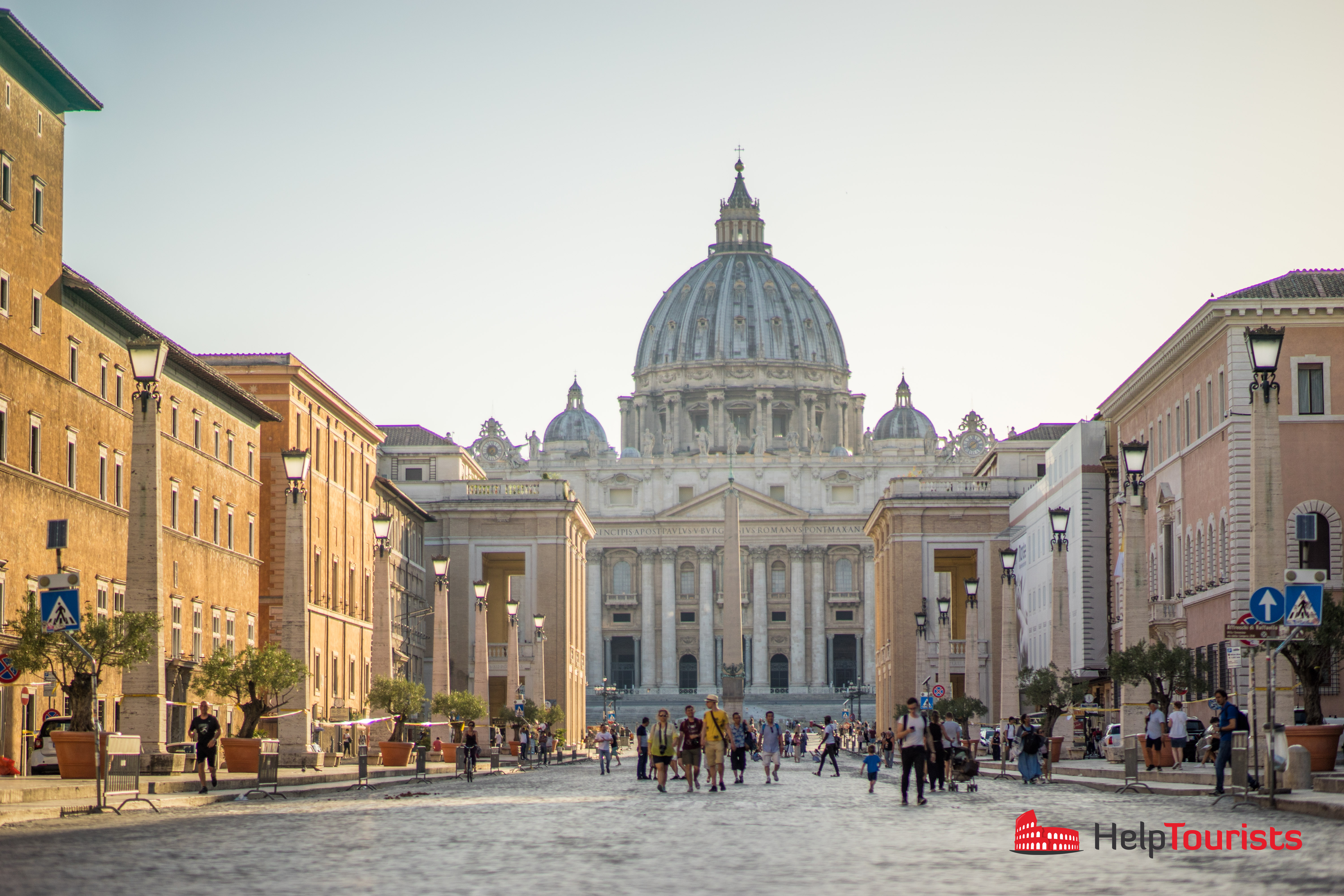
St. Peter’s Basilica and St. Peter’s Square are part of the territory of the Vatican State. In addition to the gendarmerie of the Vatican and the Swiss Guard, however, Italian police forces are active in St. Peter’s Square due to agreements between the Vatican and the City of Rome.
St Peter’s Rome: Directions, access and address of St Peter’s in Rome
St Peter’s Basilica can be found under the following address: Piazza San Pietro, 00120 Città del Vaticano, Vatican City.
For access to St. Peter’s, you have to pass a security check. On normal days this security check is located on the right side of St. Peter’s Square at the end of the Pillars of Bernini. Depending on the number of visitors, it may take more than an hour to pass the security check. You are allowed to bring drinks and umbrellas with you. With knives, even small penknives and other dangerous objects you will not be granted access to St. Peter’s Basilica.
Access to St Peter’s Basilica for persons with disabilities
Persons with disabilities and a companion can use the preferred access to the security check at St. Peter’s Cathedral free of charge.
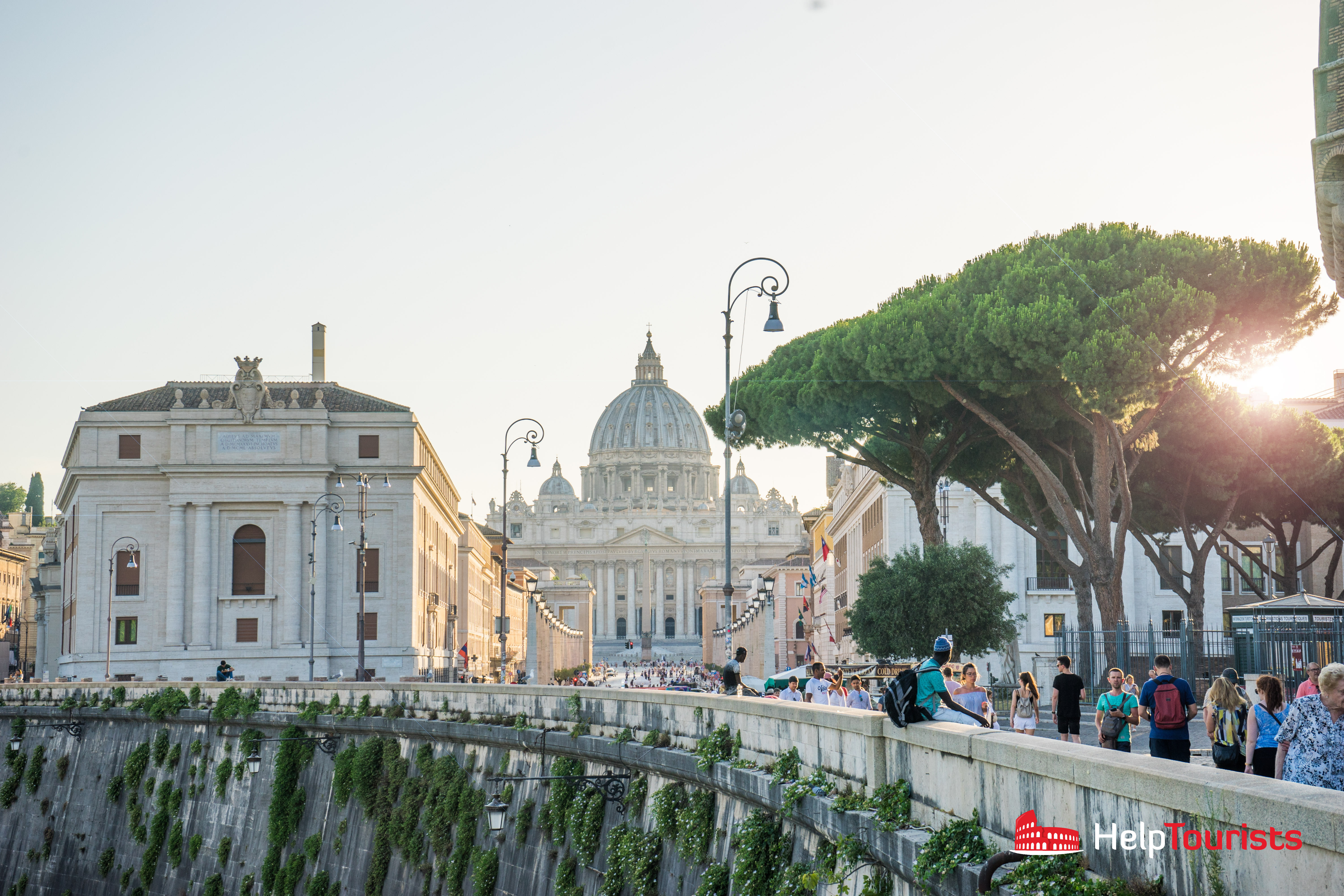
It is located behind the right Pillars of Bernini behind the building of the post office of the Vatican. There is a lift that can be used to ascend to the basilica level inside the visitor center to the right side of St. Peter’s Basilica.
St Peter’s Opening Hours: When is St Peter’s Basilica in Rome open?
St. Peter’s Basilica is generally open every day of the year. However, access is sometimes only possible by reservation, for example at the Masses of the Pope. Even during the general audiences of the Pope in St. Peter’s Square, St. Peter’s Basilica is closed. In these cases, it is not possible to visit the dome and the caves of St. Peter’s Basilica.

Find more information on the opening hours of St Peter’s Basilica, St Peter’s Square and the Vatican Museums in a different article:
St Peter’s Rome: How much is the entrance fee to St Peter’s Basilica in Rome?
Entrance to St Peter’s in Rome is free. Should you decide for a tour of St. Peter’s Basilica or a guided tour of the Vatican including a visit to the Basilica, you will need a ticket. More information about St. Peter’s entry and entrance fees to St. Peter’s Square and the Vatican Museums can be found in this article:
St Peter’s Basilica Waiting Lines: How can I avoid waiting lines at St Peter’s Basilica in Rome?
There are three ways to avoid having to wait in line for a long time at St Peter’s Basilica in Rome:
- Visit St Peter’s Basilica before 9am.
- Book a ticket for preferred access to the security checks. As already mentioned, the preferred entrance to the security checkpoints is inside the Bernini’s right portico behind the post office.
- Book a guided tour through the Vatican Museums with direct access to St Peter’s Basilica.
On days of General Audience on Wednesdays, as well as for Pope’s Mass and before the Angelus on Sunday noon, additional security checkpoints will be installed under the Pillars of Bernini. For these times it is not possible to book a preferred access to the security check.
St Peter’s Basilica Tickets: Where to buy tickets for St Peter’s Basilica in Rome?
When I last visited St. Peter’s Basilica, I booked a morning tour through the Vatican Museums, which took me through the private museums of the popes, the Sistine Chapel and finally to St. Peter’s Basilica.
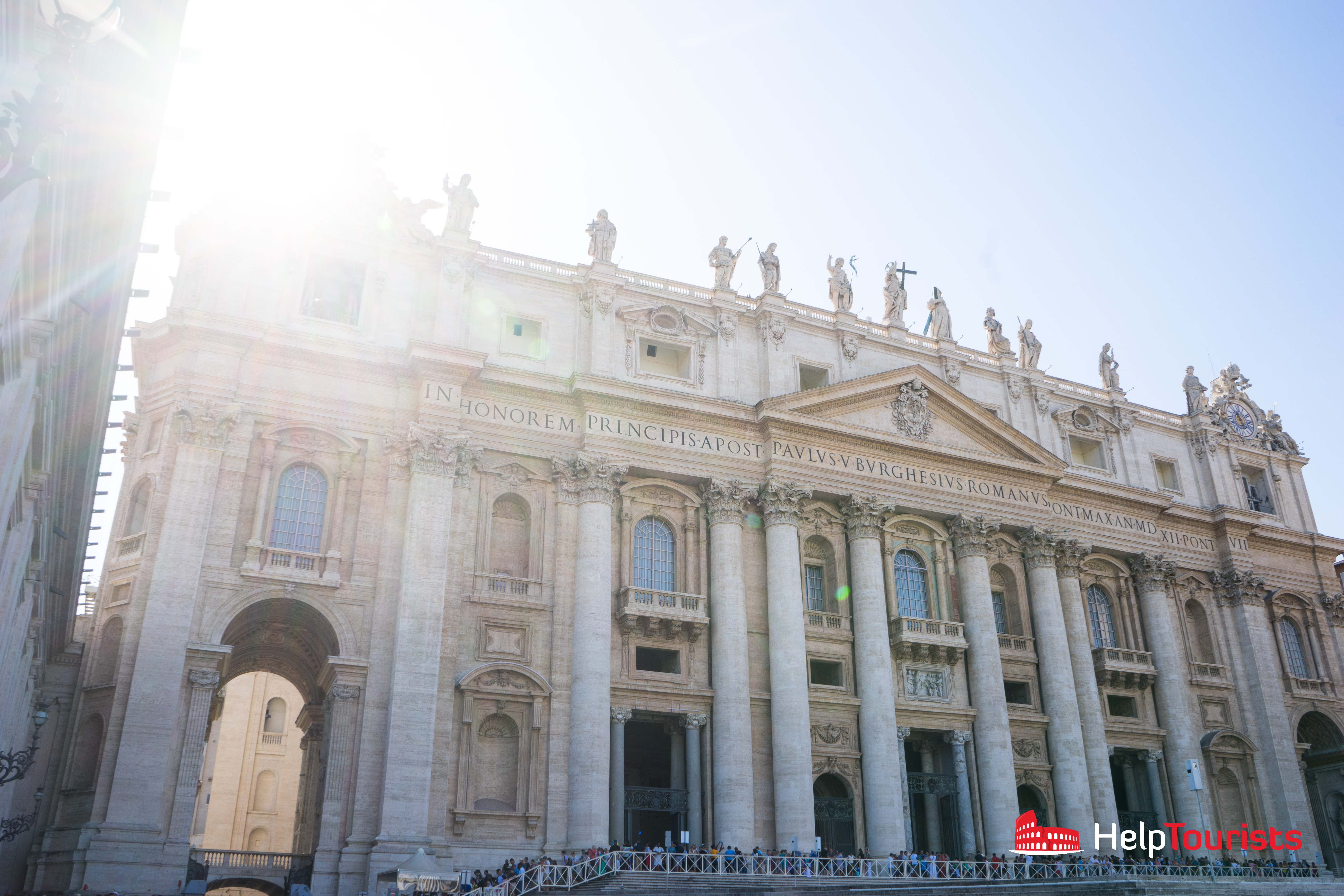
All this without having to wait in line and at a time when not too many visitors were on the way. I would recommend this tour to anyone and I would book it again and again!
St Peter’s Rome: Dress code inside St Peter’s basilica in Rome
The dress code for visiting sacral sites applies to visiting St. Peter’s Basilica. Shoulder and knee must be covered. To cover the shoulders, you can also use a scarf. If you do not follow these rules, you will unfortunately be denied access to St. Peter’s Basilica.
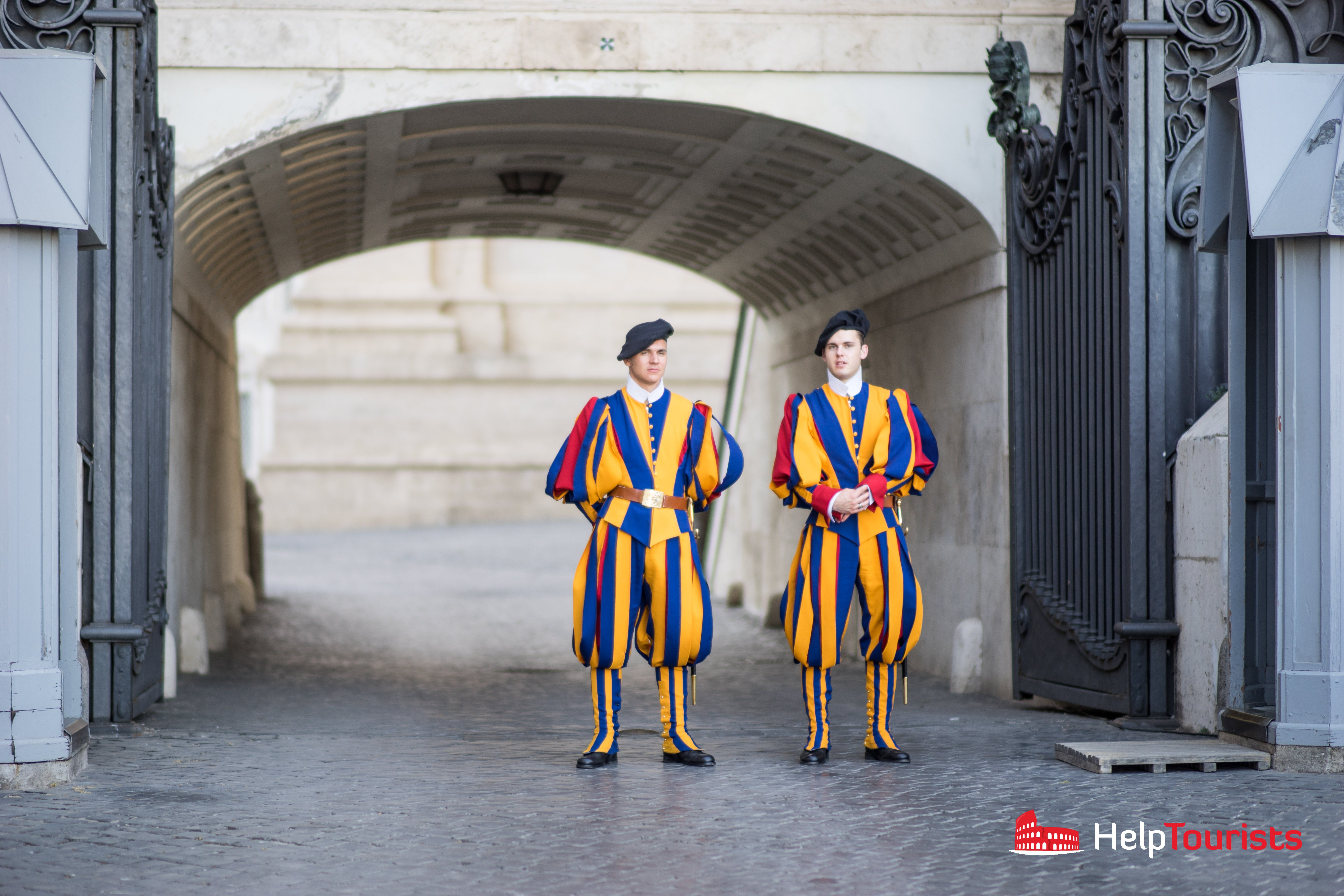
The visitor center has sanitary facilities and storage for items. Here you can leave strollers or other items.
St Peter’s Basilica Construction: Information about the building
1. St Peter’s Rome: The facade of St Peter’s Basilica
The façade of St. Peter’s in Rome was built by Carlo Maderno between 1607 and 1615. It is 114.69 meters wide and 45.44 meters high. Gigantic pillars frame three high portals, two smaller portals and the loggia delle benedizioni. This is the loggia of blessings from which the new pope will be proclaimed and the blessings of Urbi et Orbi will be given at Christmas and Easter.

Today the portals are divided to better regulate the flows of visitors. You can reach the dome of St. Peter’s Basilica through the right portal, the middle portal leads you to the basilica and on the left is the exit. In front of the facade, at the staircase to the basilica, are the statues of Saints Peter (left) and Paulus (right) with their insignia, the key and the sword. The façade ends on the top with 13 statues, which are around 5.70 meters high. They represent Jesus, John the Baptist and 11 of the 12 apostles, as Peter is missing.
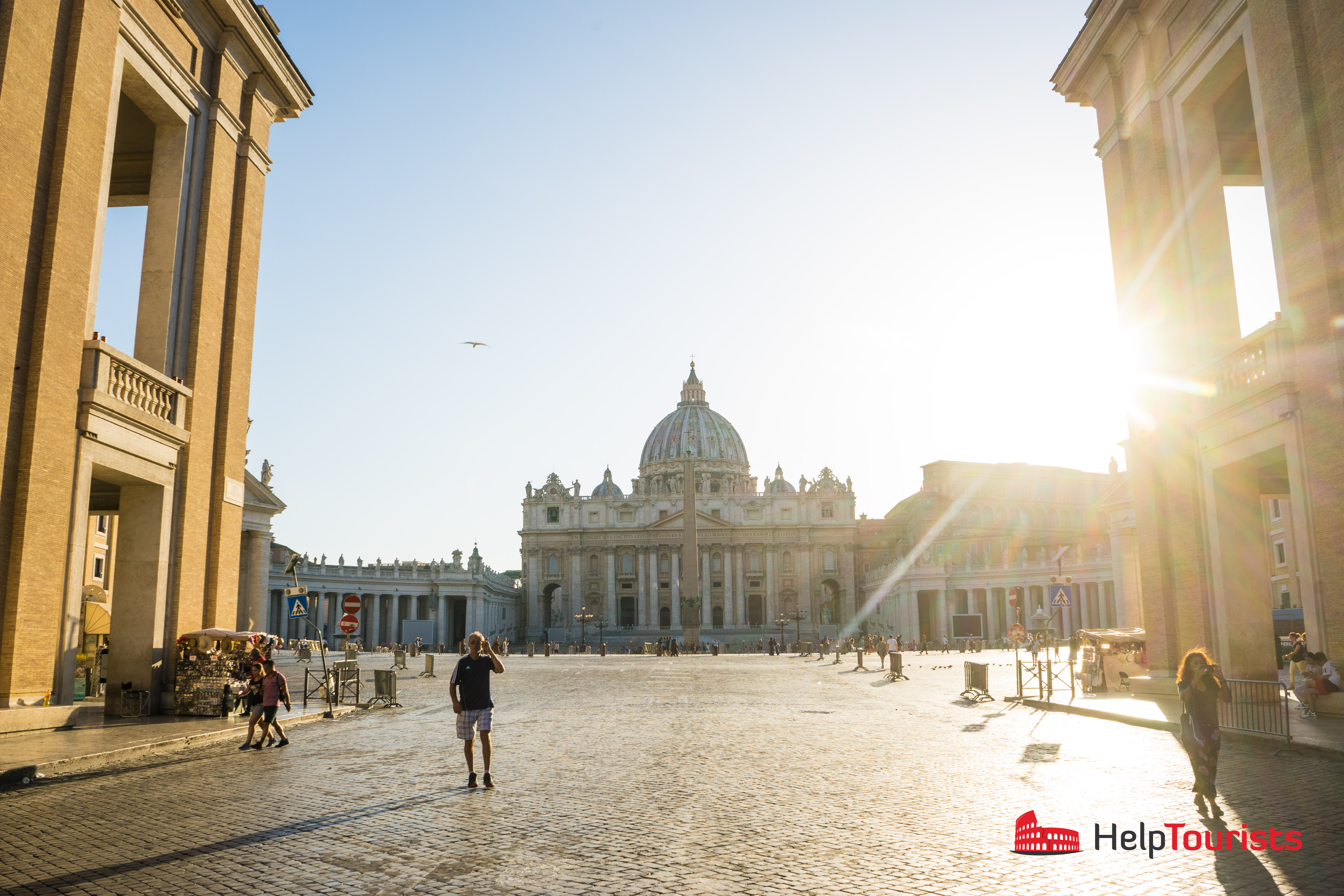
On both sides of the facade are clocks by the Roman architect Giuseppe Valadier, created in 1785. The left clock “l’orologio oltremontano” indicates the current time, while the right clock “l’orologio italiano” indicates a wrong time. It is often said that according to the old Italian system, it shows the time until sunset, but that’s not true! The clock is just wrong! I watched the clock for a long time and calculated it back and forth. Then I inquired at Radio Vatican and received the answer that the clock deliberately indicates a wrong time so that the devil would not come to the service in time. This is an old folk wisdom, which has now been confirmed by Radio Vatican.
Under the clock “Oltremontano” is the bell house with six bells. The largest is from 1785 and is from Valadier, above it are two smaller bells visible. Behind it are three other bells, the oldest, la “Rota” dates back to the 13th century.
2. St Peter’s Rome: The portico of St. Peters’ in Rome
Behind the entrance is an entrance hall – a portico – which extends over the entire width of the facade. On the left is an equestrian statue of Charlemagne, who was crowned emperor in 800 in the old church. It was built by Cornacchini in 1725. The right equestrian statue is by Bernini. It shows Emperor Constantine, who made Christianity the Roman state religion and presided over her as Pontifex Maximus. Whether he himself became a Christian is controversial, but in the Orthodox Church he is worshipped as a saint.
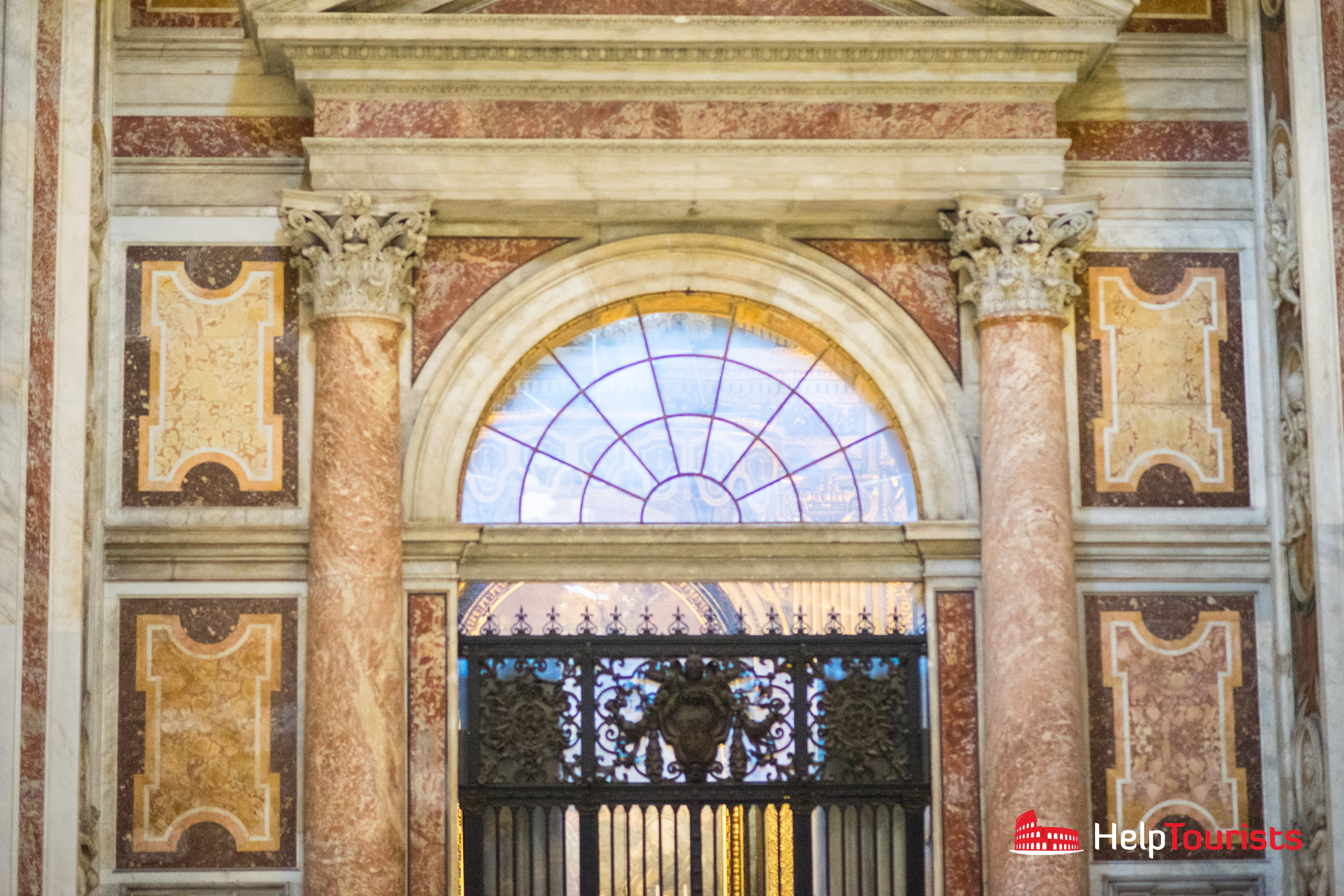
On the backside of the entry hall five portals lead to St Peter’s Basilica. On the very left is the death portal from 1964. This is where they exit for the funeral processions of the popes. to the right next to it is the portal of Good and Evil from 1977. The middle portal dates back to the old basilica and was built by the Tuscan sculptor from 1439 until 1445. To the right is the portal of sacraments – the main entrance to St Peter’s Basilica at the moment – to the very right is the “Porta Santa”, the holy portal from 1950, which is the main entrance during the jubilee years. The next jubilee year, also called “Holy Year” will be in 2025.
3. St Peter’s Rome: St Peter’s Basilica in numbers
The architect of St. Peter’s Basilica in Rome is not so easy to define as several architects and site managers have been involved in the construction process over the centuries. These include Donato Bramante, after whose death Raffael, da Sangallo and Giocondo took over. Later on architects such as Peruzzi, Buonarroti and Ligorio, Barozzi da Vignola as site manager as well as later Maderno and Bernini worked on St Peter’s Basilica. In the last section of this article you will find more information about who was the architect of St. Peter’s Basilica.
- 64: funeral of Peter the Apostle in the Horti di Agrippina, next to the Circus of Nero
- 160: erection of a couple chapel next to Peter’s grave
- 319-333: erection of the five-aisled basilica of Constantine on the necropolis outside of the Circus of Nero, Size of the old St Peter’s Basilica: 119×63 m, hight 37 m
- 1452-1455: demolition of the old St Peter’s Basilica after a fire
- 1506-1525: construction of the new St Peter’s Basilica and inauguration on the 26th of November 1626 (Construction year of St Peter’s Basilica)
- 1490: erection of the northern right-hand-side fountain supplied by the ancient aqueduct Aqua Paola
- 1586: erection of the obelisk at the instigation of Pope Sixtus V. Previously, he was in the adjacent Circus of Nero, in which he was transported in the year 40 from Heliopolis in Egypt. The obelisk is made of red granite is 25.5 meters high, has a total height, with pedestal and cross, of almost 40 m and a weighs about 330 tons.
- 1614: Adaptation of St Peter’s Square by Carlo Maderno to the new basilica and reconstruction of the fountain
- 1656-67: Bernini’s final transformation of St. Peter’s Square, displacement of the ancient fountain, the square is 320 meters deep and 240 meters in diameter, the portico of the Bernini (colonnade) consists of 284 columns and 88 pillars, arranged in four rows, with 140 statues of saints
- 1657: erection of a second fountain south of the obelisk
St Peter’s Basilica: The size of St Peter’s Basilica in Rome
These numbers will give you an overview of the size of St Peter’s Basilica in Rome:
- Built up area: 20.139 m²
- Walk in area: 15.160 m²
- Internal length: 186,3 m
- Transept: 137,85 m
- Width of the aisle at the entrance: 25,7 m
- Width of the aisle at the transept: 23 ,
- Length of the aisle: 98 m
- Hight of the aisle: 45 m (hight of the St Peter’s Basilica)
- Width of the transept: 154 m
The floors of the new St Peter’s Basilica are 3,2 m higher compared to the old St Peter’s Basilica in order to give space to the caves.
The dome of St. Peter’s Basilica in Rome also has interesting dimensions:
- Inner diameter: 41,5 m
- Outer diameter: 58,9 m
- Weight: approximately 14 000 tons
- Height of the dome lantern from the ground: 117,57 m
- Height of the cross of the dome from the ground: 133.3 m
4. St Peter’s Rome: Inner space of the Basilica in Rome
On the right side of the first chapel right behind the entry is a Michelangelo pieta from 1499 located. It was damaged in 1972 during a crazy attack and is since protected by a glass front.
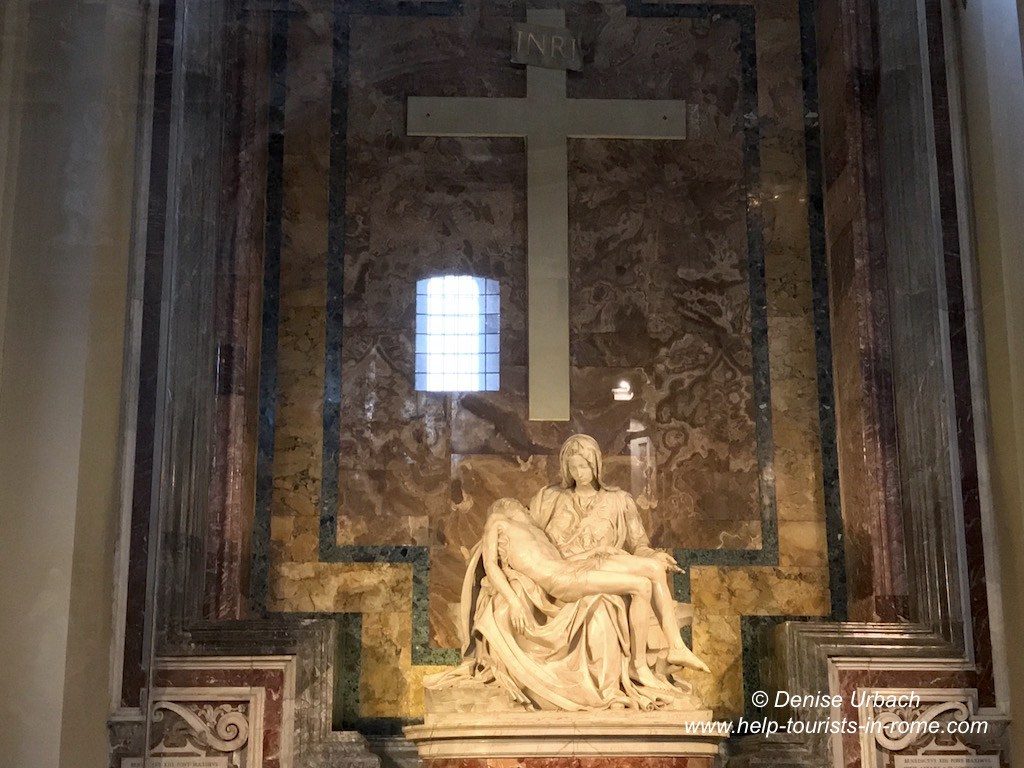
Turning to the nave, one can admire the enormous dimensions of this structure. The nearly two-meter high stoups were created by Alberto Cornacchini (1722-1725). The statues of saints in the lower niches have a height of 4.5 meters, in the upper niches 5.5 meters. In front of the central portal, a red porphyry disc is embedded in the ground on which Charlemagne was supposedly crowned Emperor in 800. Charlemagne supposedly also founded the Campo Santo Teutonico.
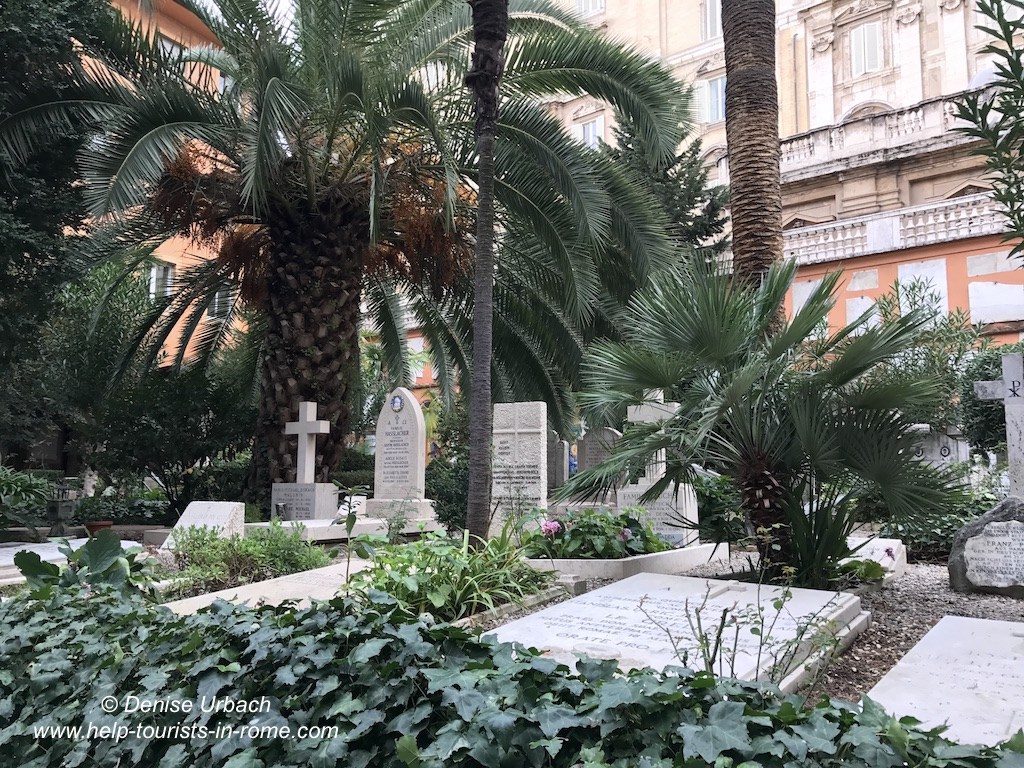
The first chapel on the left side is the baptistry. A crib is erected here for Christmas. The nave is divided by 3 massive pillars which carry 4 arches of which each is 25 meters high and 15 meters wide. Itself, the nave covers an area of 2.500 m².
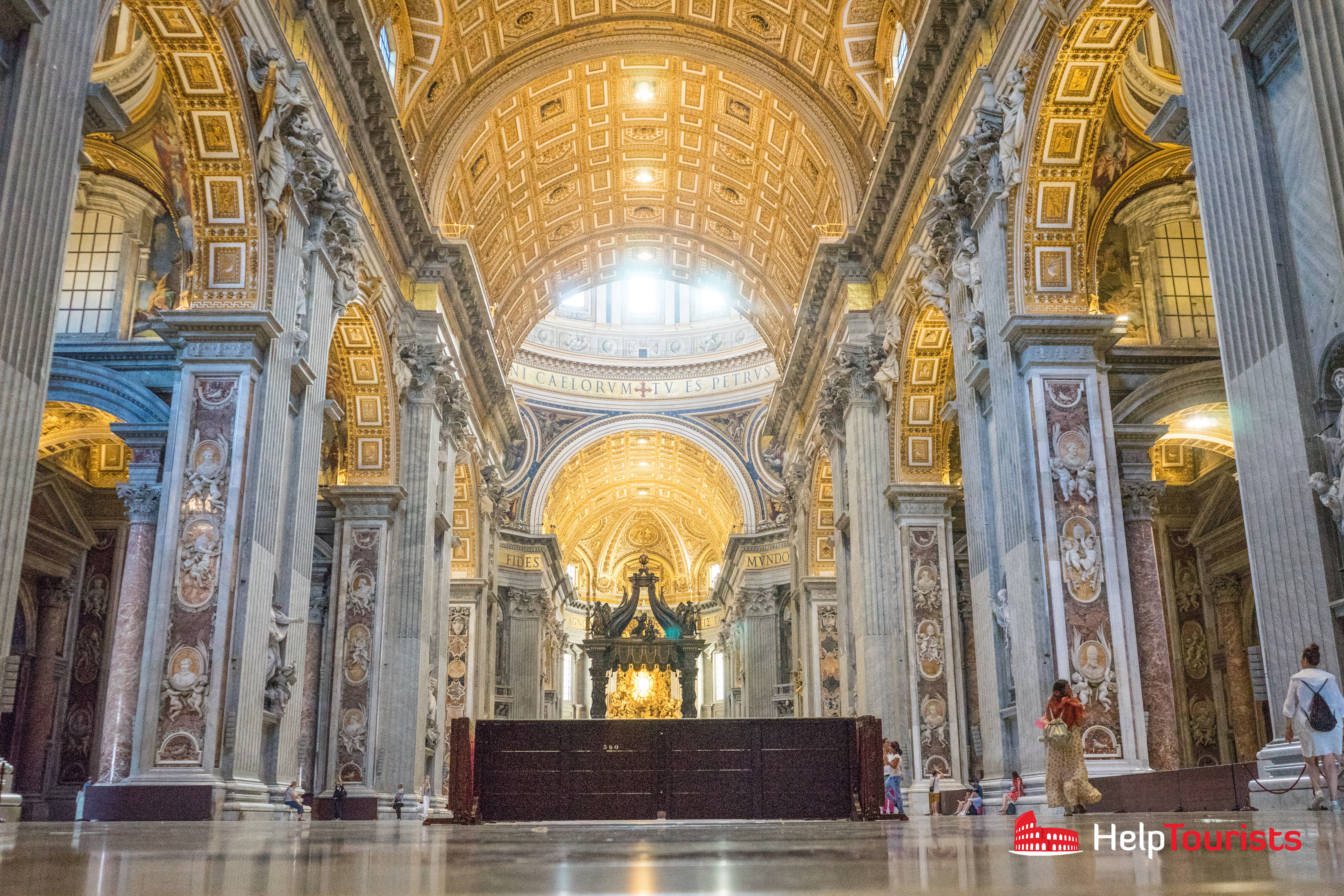
The names of the largest churches in the world are engraved on the floor in the nave’s center. Amidst these are the Cathedral of Cologne and the Cathedral of Speyer. Through louvers you can look down into the caves of St. Peter’s Basilica. Early in the morning, when masses are held in the caves, you can hear the singing of the faithful.
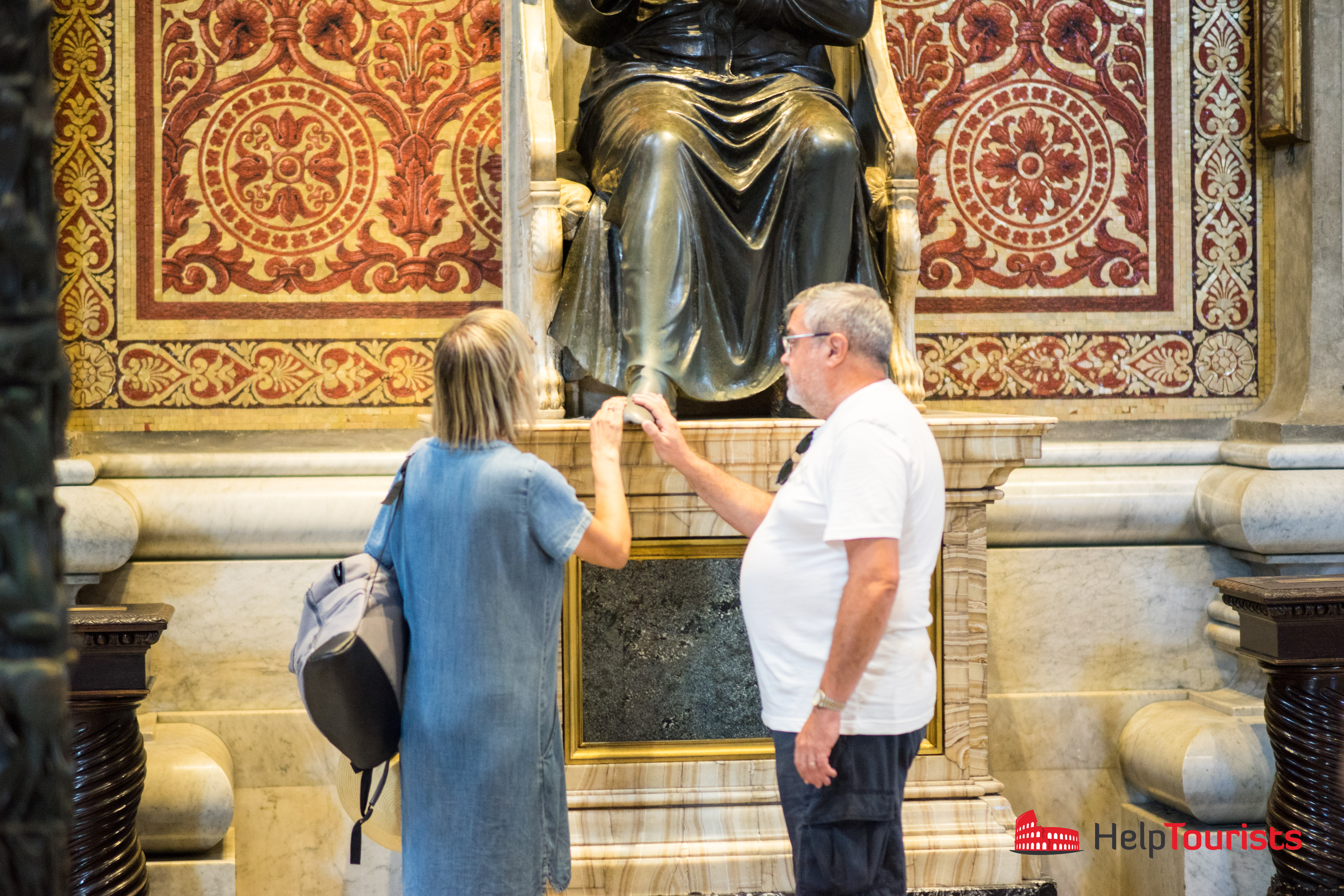
Looking from the last arch to the left you can see the entrance to the sacristy and the treasury. At the end of the main nave on the right is the bronze statue of St. Peter. In the square below the dome rises the Papal altar under which St. Peter is buried. On the pillars of the square, which carry the dome, are the steps that lead down to the caves of St. Peter’s Basilica.
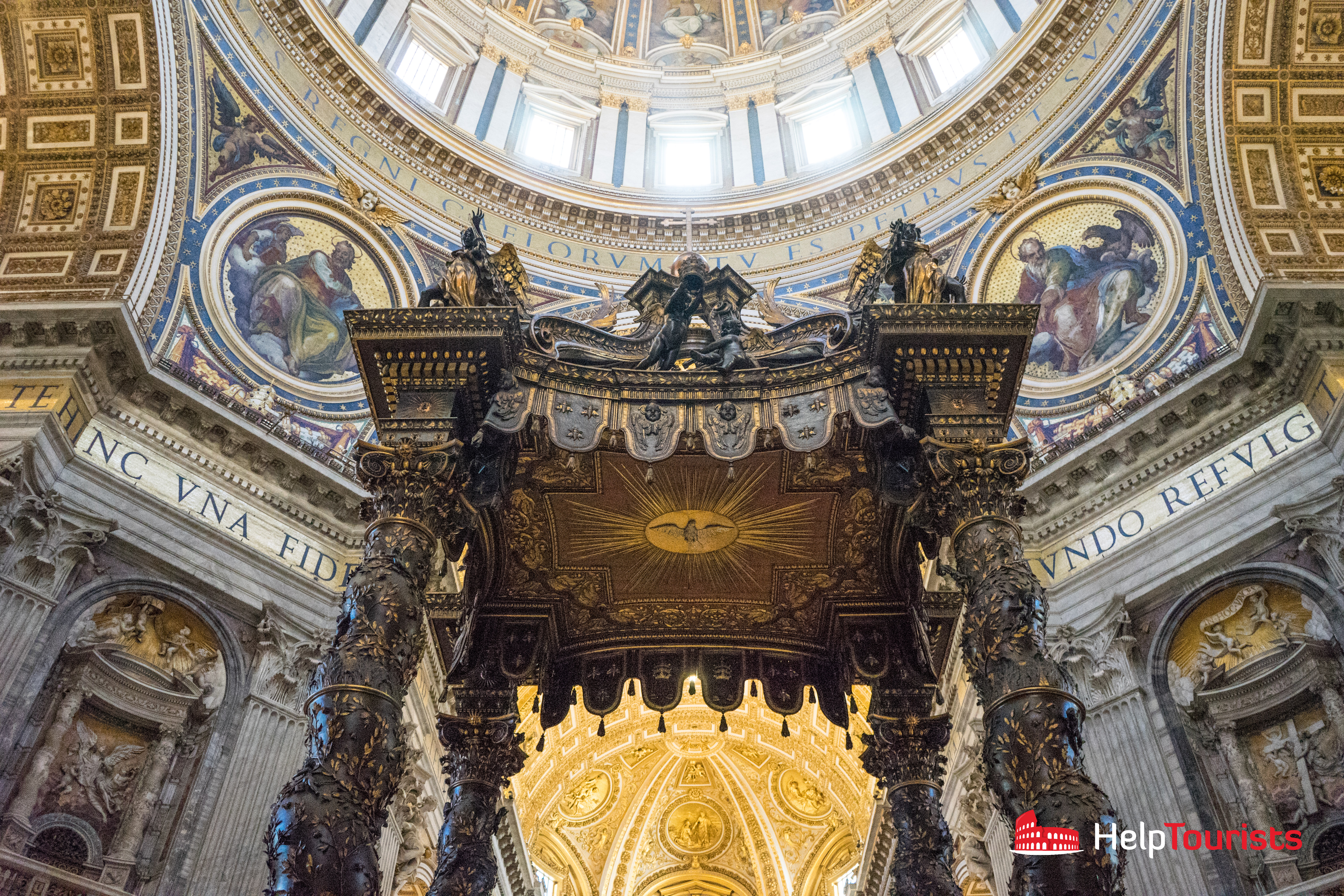
Behind the square is the choir with the altar created by Bernini and the Cathedra Petri. The relic in this stylized throne is said to be the chair of St. Peter – hence the name. Above that, the Holy Ghost as a dove lights up in a window of alabaster on the scene.
5. St Peter’s Altar: The Papal Altar of St Peter’s Basilica in Rome
Under the dome of St. Peter’s Basilica rises the monumental canopy of St. Peter. This work realised by Bernini between 1624 and 1633 is a mixture of sculpting and architecture. The canopy is 28,5 meters high. Evil tongues claimed that the bronze was taken from the pantheon and there was the saying “what the barbarians didn’t do, the Barberini did”. The author of this libel was identified and had to apologize to Pope Urban VIII, member of the Barberini family. Indeed, bronze was taken from the Pantheon but was used for canon balls at the Castel Sant’Angelo.
The winding 11-meter-high columns take their inspiration from the Pillars of Pergola of the old St. Peter’s Basilica, which in the Christian architecture of the first centuries separated the liturgical space of the choir from the rest of the church. The winding shape of the columns is said to have its origin in the columns of the Temple of Solomon.
Under the canopy is the Papal altar located. 7 steps lead to the Altar which may only be used by the Pope or his representative. He was moved from the center to the choir. In front of the altar is the Confessio, a prayer room in front of the grave in which St Peter is supposedly buried.
6. St Peter’s Dome: The Dome of St Peter’s Basilica in Rome
Above the Papal altar is the dome of St Peter’s Basilica. It was designed by Michelangelo, but he did not see its completion.
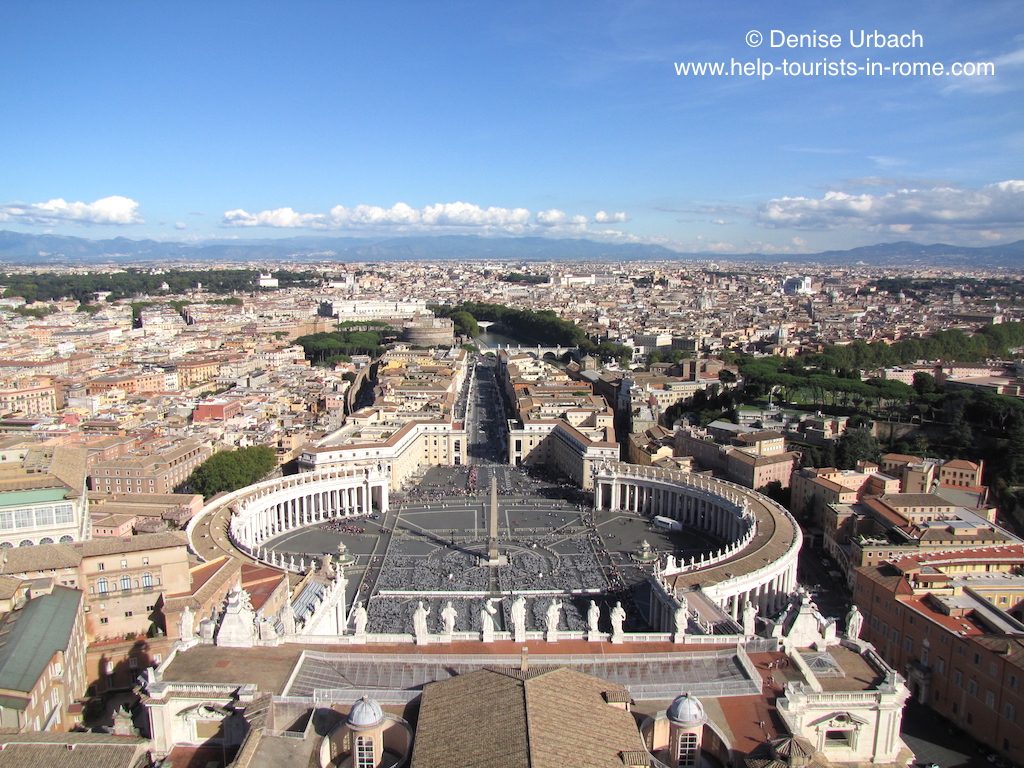
The dome consists of a supporting inner shell of bricks and a protective outer shell. The area between the shells is walkable. 320 steps separate the dome from its observation desk. If you suffer from claustrophobia you should avoid visiting the observation desk. The further up, the tighter it gets and you can not turn back! When the weather is good, the viewing platform is one of the most beautiful viewpoints of the city of Rome.

The weight of the dome, estimated at 14,000 tons, rests on a cylinder built by Michelangelo, which is recognizable from the outside by 16 double columns. Four huge pillars with a scope of 71 m carry the whole structure. If you want to visit the dome of St. Peter’s Basilica, you can read my article about visiting St. Peter’s Dome and find out why visiting the dome is worthwhile!
St Peter’s Basilica Dome: Tickets for visiting the dome of St Peter’s Basilica in Rome
You can buy tickets for the dome of St Peter’s Basilica in Rome online to avoid waiting line on the site. You can buy tickets here.
7. St Peter’s Rome: The caves of St Peter’s Basilica in Rome
With a little luck, you can also visit the caves of St. Peter’s Basilica in Rome. There are regularly published opening times for the caves, however, when masses take place in the caves, you will be denied access. So it is very unlikely that you will be granted access to the caves before 10 o’clock in the morning.
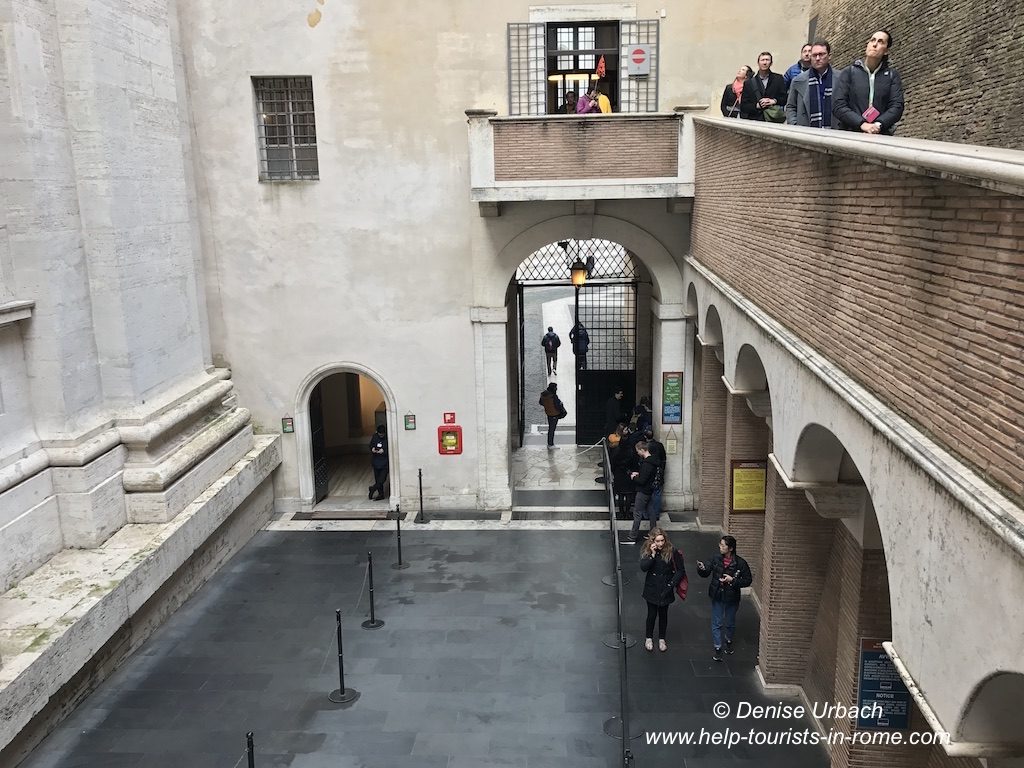
The caves are located on the level of the old St. Peter’s Basilica, 3.20 meters below the floor of the current St. Peter’s Basilica. Many popes are buried here, and the tomb of St. Peter is amongst them. The caves are accordingly decorated. They are actually a large crypt and a reminder of the ancient Basilica of Constantine. There are several chapels in them. The entrance to the caves is usually on one of the four pillars that support the dome, the exit (see picture) is opposite the cash desk for the ascent to the dome.
8. St Peter’s Rome: The necropolis of St Peter’s Basilica in Rome
Underneath the caves is the necropolis, a cemetery, a city of the death. It lies 10 meters under the floor of today’s St Peter’s Basilica and dates back to the first century AD. As it was the law in Rome, the dead were buried outside the city walls. Back in time the necropolis under St Peter’s Basilica was erected at the edge of Caligula’s racecourse built in 37 AD. Later the racecourse was called Circus of Nero. Part of the burial ground was the mausoleum of Hadrian, which has become the Castel Sant’Angelo today.
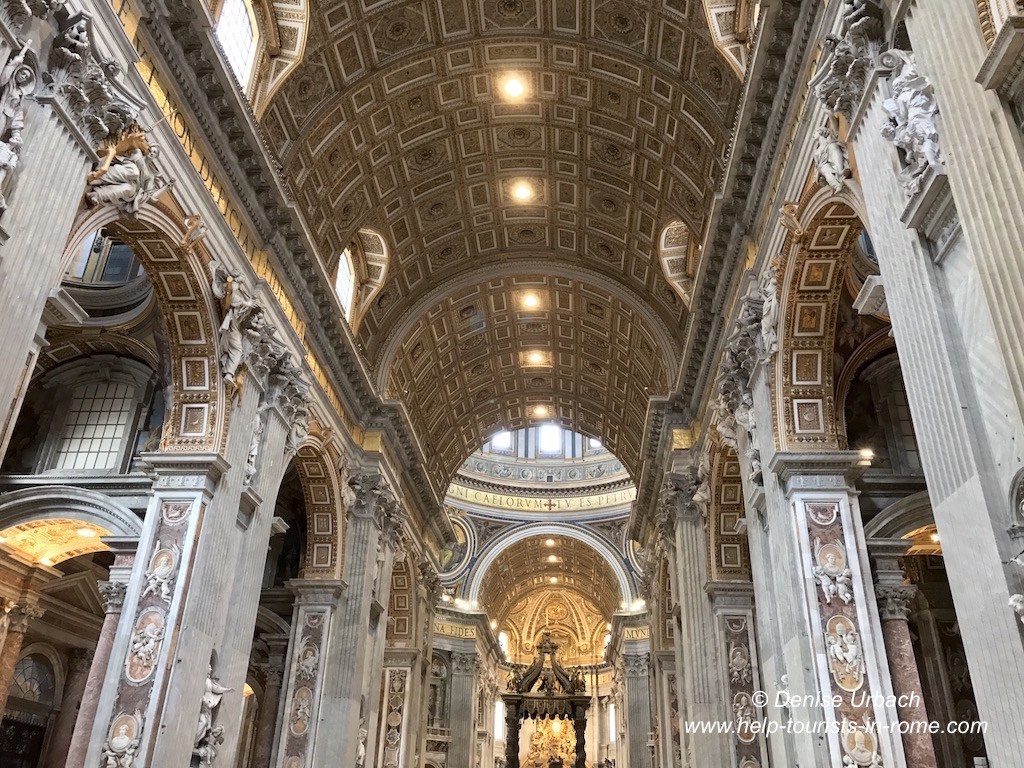
The apostle Peter is said to have been executed in the Circus and buried in the necropolis. As was usual then, his followers were buried around the tomb of Peter and in 160 AD, the first chapel was built. Later, the basilica of Constantine – the old St. Peter’s Basilica – was built on the chapel and from 1506 the new St Peter’s Basilica.
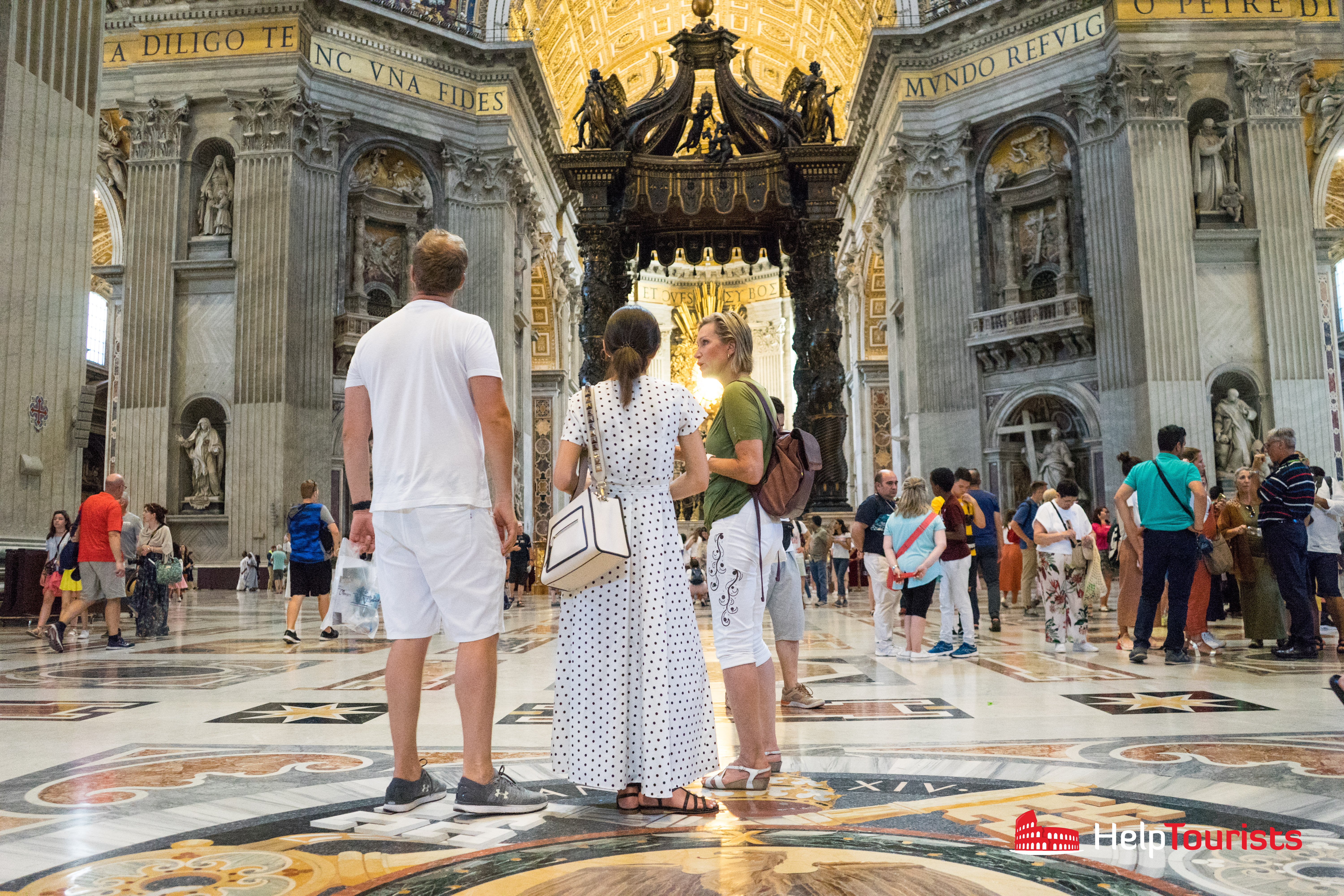
The necropolis was buried when Emperor Constantine had the grounds paved for the construction of the basilica. In 1939, excavations began, which brought the necropolis back to light and in 1998 restoration works began. The necropolis in St. Peter’s Basilica can today be visited in small groups, but only by appointment.
The basilica was finally inaugurated in 1626 by Urban VIII. At his death in 1629 Maderno was the strongest representative of the early Baroque. He was followed by Gian Lorenzo Bernini, Francesco Borromini and Pietro da Cortona, who brought the Baroque to its heyday in Rome. Benini was the successor of Maderno in the construction of the basilica. Although much of the work was already done, it took another half-century for embellishment and for the design of St. Peter’s Square.
Social media
Become part of the HelpTourists community on Facebook! In our private group you can exchange ideas with other Rome lovers. Follow us on Instagram and Pinterest and get regular inspiration and insider tips for your next Rome trip!
Pin information about the St. Peter’s Basilica in Rome on Pinterest
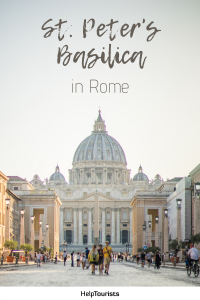
This article contains referral links. There are no additional costs for you, but thanks to these links we get a small commission. This enables us to continue to work diligently on the website and always have the latest information from Rome ready for you. Thank you for your support!









